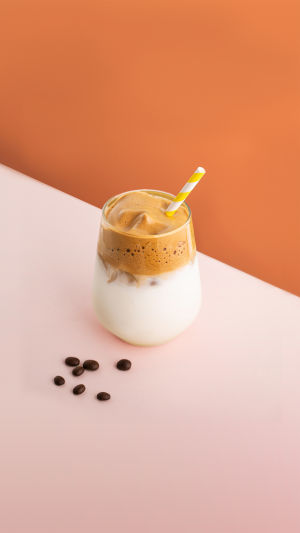There's something magical about that first sip of a perfectly made cappuccino. It's smooth, rich, and topped with a velvety layer of foam that lingers on your tongue.
But behind the comforting flavor lies a science that baristas master with precision: the delicate interplay of coffee beans and milk foam.
From the grind of the beans to the microfoam topping, every step shapes the taste.
In this article, we dive into how these two elements—coffee quality and milk frothing—work together to create the perfect cappuccino.
<h3>Coffee Beans: The Heart of Flavor</h3>
The foundation of every cappuccino lies in the coffee beans. Not all beans are created equal. Arabica beans, known for their nuanced sweetness and complexity, are often favored for cappuccinos. However,Robusta beans, with their bold, bitter punch, can offer depth and strength when blended into espresso.
Freshness is another key factor. Once coffee beans are roasted, they begin to lose flavor and aroma. Ideally, beans should be used within two to four weeks of roasting to ensure maximum quality. The grind size also plays a vital role. A too-coarse grind will make the espresso watery, while an overly fine grind can result in bitter over-extraction. Baristas often aim for a balance, using a fine grind to extract the oils and sugars that give espresso its rich, layered taste.
Learn How To Make a Cappuccino | 2 Methods & Recipes
Video by Coffee to Art
<h3>The Art of Milk Frothing</h3>
Once the espresso is brewed, it's time to froth the milk. Perfect milk foam isn't just about heating it it's about creating tiny bubbles, known as microfoam, that give cappuccino its signature creamy texture.
The temperature matters too. Milk should be steamed between 140°F and 160°F (60°C to 70°C). Anything hotter will scald the milk, ruining its natural sweetness, while cooler milk won't create stable foam. Whole ends produce the best microfoam due to its higher fat content, but non-dairy alternatives like oat or almond milk are becoming popular, though they require different steaming techniques to achieve the same result.
During frothing, air is introduced into the milk. The goal is to achieve a balance where the foam integrates smoothly with the liquid milk. If done correctly, the microfoam sits like a cloud on top of the espresso, creating that smooth, enjoyable texture cappuccino lovers crave.
<h3>Striking the Perfect Balance</h3>
A well-made cappuccino is all about balance. The strength of the espresso needs to be complemented by the milk's sweetness and the ofoam'stexture. If the coffee is too bitter, it overpowers the milk if the foam is too stiff, the drink feels heavy. This delicate interplay is why experienced baristas become experts not just at brewing espresso, but also at steaming milk to perfection.
The classic cappuccino has equal parts espresso, steamed milk, and foam, but every cup can be adjusted based on personal preference. Some people prefer a "dry" cappuccino with more foam and less milk, while others like it "wet", with more milk and less foam. Regardless of the style, the secret lies in using quality beans and creating the perfect microfoam.
The next time you enjoy a cappuccino, remember the science behind every sip. From the origin and freshness of the beans to the perfect froth on top, each element plays a critical role in the final flavor. Whether you're crafting your cappuccino at home or ordering from your favorite café, knowing how beans and foam work together will give you a deeper appreciation for this classic beverage.





